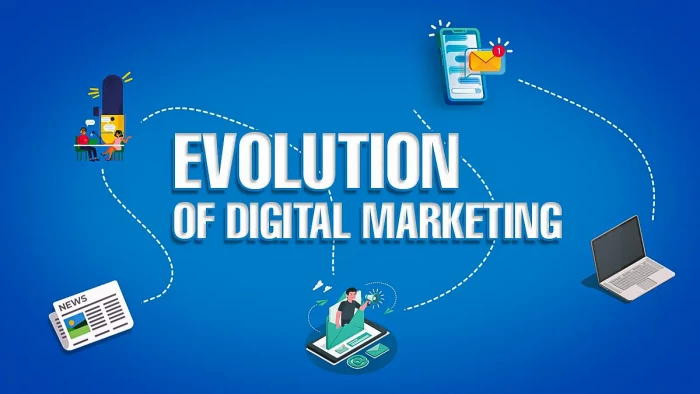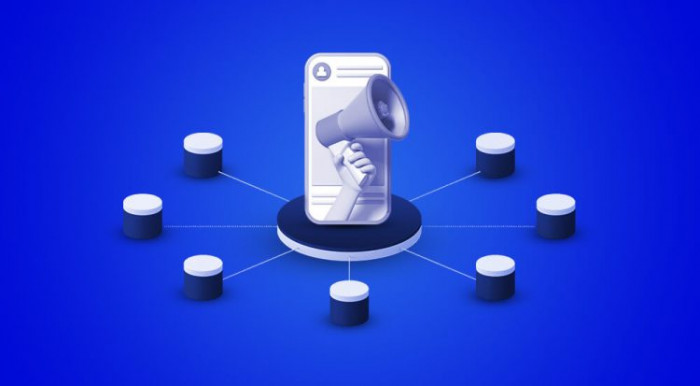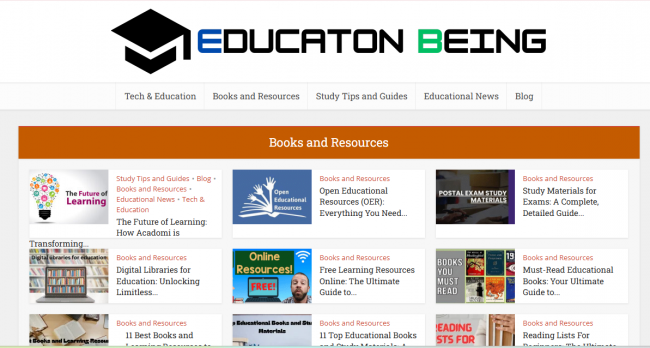The digital marketing industry is constantly evolving, driven by rapid technological advancements and shifting consumer behaviors.
Staying updated with the latest trends and innovations is crucial for marketers to remain competitive and effective.
As we look to the future, it’s essential to identify and understand the next big moment that will shape the digital marketing landscape.
Digital marketing has come a long way from its early days of simple banner ads and email campaigns. According to a report by Statista, global digital ad spending reached $378.16 billion in 2020 and is projected to exceed $525 billion by 2024.
Today, digital marketing encompasses a wide range of strategies and tools, from social media marketing to AI-driven personalization. With each new development, marketers have had to adapt and innovate to capture the attention of their target audiences.
In this blog post, we will explore the evolution of digital marketing, examine current trends, and delve into what could be the next big moment in the industry.
From emerging technologies to shifts in consumer expectations, we will cover the key factors that are set to redefine digital marketing in the coming years. Let’s start by looking at how digital marketing has evolved over time.
Evolution of Digital Marketing

Digital marketing has undergone significant transformations since its inception. Understanding these changes helps us appreciate how far the industry has come and where it might be headed next.
Historical Perspective: Key Milestones
- 1990s: The rise of the internet introduced email marketing and simple banner ads. By 1996, Hotmail was launched, marking the start of email marketing campaigns that reached millions. The first clickable web ad, launched by AT&T in 1994, is considered a pivotal moment, generating a click-through rate of 44%.
- 2000s: Search engines like Google revolutionized digital marketing with Search Engine Optimization (SEO) and Pay-Per-Click (PPC) advertising. Google AdWords, launched in 2000, transformed how businesses reached consumers. By 2003, the PPC market had grown to $1.4 billion.
- 2010s: The explosion of social media platforms such as Facebook, Instagram, and Twitter reshaped marketing strategies. Content marketing, influencer marketing, and data analytics became pivotal. By 2019, social media ad spending reached $89 billion globally.
Impact of Technological Advancements
- Mobile Technology: The proliferation of smartphones led to mobile-first marketing strategies, app-based advertising, and location-based services. As of 2021, mobile devices accounted for over 54.8% of global web traffic.
- Artificial Intelligence: AI-enabled tools for personalized marketing, chatbots, and predictive analytics became mainstream. AI in marketing is projected to grow to $40 billion by 2025.
- Big Data: The ability to collect and analyze vast amounts of data transformed how marketers understand consumer behavior and make decisions. By 2022, the big data market was valued at over $70 billion.
Major Shifts in Consumer Behavior
- Omnichannel Experience: Consumers expect a seamless experience across multiple channels, from online to in-store. A study by Harvard Business Review found that 73% of consumers use multiple channels during their shopping journey.
- Demand for Personalization: Personalized content and targeted advertising have become essential for engaging audiences. According to Epsilon, 80% of consumers are more likely to purchase from brands offering personalized experiences.
- Privacy Concerns: Increasing awareness of data privacy has led to stricter regulations and a demand for greater transparency from brands. The General Data Protection Regulation (GDPR) has reshaped data handling practices globally, affecting how companies collect and use consumer data.
The evolution of digital marketing shows a clear trend towards more sophisticated, data-driven, and customer-centric approaches. Next, we'll explore the current trends that are shaping the digital marketing landscape.
Current Trends Shaping Digital Marketing

Digital marketing is currently influenced by several key trends that are shaping its future direction.
Rise of Artificial Intelligence and Machine Learning
AI and machine learning are transforming how marketers analyze data, segment audiences, and create personalized content. According to a report by Salesforce, 60% of marketers are using AI to create more dynamic and personalized experiences for their customers. Sundar Pichai, CEO of Alphabet Inc., has emphasized, "AI is one of the most important things humanity is working on. It’s more profound than, I don't know, electricity or fire."
Growth of Video Content and Live Streaming
Video content continues to dominate digital marketing strategies. Cisco predicts that by 2025, online videos will make up more than 85% of all consumer internet traffic. Platforms like YouTube, TikTok, and Instagram Live are increasingly popular for brand storytelling and consumer engagement. Gary Vaynerchuk, CEO of VaynerMedia, emphasizes, "If you’re not putting out videos, you’re losing relevance."Brands looking to boost visibility on Instagram are leveraging short-form videos and live streams to connect with audiences in real-time. With the platform’s algorithm favoring engaging video content, consistent posting and interactive elements like Q&A sessions can significantly improve reach.
Increased Focus on Personalization and Customer Experience
Consumers expect tailored experiences and relevant content. Personalization is no longer a luxury but a necessity. According to a survey by Epsilon, 80% of consumers are more likely to do business with a company if it offers personalized experiences. Neil Patel, co-founder of Crazy Egg, says, "Personalization is not just about addressing someone by their first name. It’s about creating unique experiences that resonate with your audience on a deeper level."
Expansion of Social Media Platforms and Influencer Marketing

Social media platforms continue to evolve, offering new opportunities for brands to connect with audiences. Influencer marketing has become a powerful tool for reaching niche markets. According to a survey by Mediakix, 89% of marketers find ROI from influencer marketing comparable to or better than other marketing channels. Sheryl Sandberg, COO of Facebook, notes, "We’ve seen a shift to more personalized experiences, and social media is at the forefront of that."
Growth of Voice Search and Smart Assistants
Voice search is becoming increasingly popular with the rise of smart assistants like Amazon Alexa, Google Assistant, and Apple Siri. According to Comscore, by 2022, 50% of all searches will be voice-based. Satya Nadella, CEO of Microsoft, states, "Voice is becoming a critical interface for computing. It’s about creating more natural interactions."
Rise of Interactive Content
Interactive content, such as quizzes, polls, and interactive videos, is gaining traction as a way to engage users more deeply. According to a survey by Content Marketing Institute, 81% of marketers agree that interactive content grabs attention more effectively than static content.
These trends indicate a shift towards more dynamic, personalized, and interactive marketing strategies, driven by technological advancements and changing consumer expectations. Next, we will explore what could be the next big moment in digital marketing.
The Next Big Moment in Digital Marketing
As we look ahead, several emerging technologies and innovations are poised to become the next big moment in digital marketing. These advancements promise to reshape the industry, providing new ways for brands to engage with consumers and optimize their marketing efforts.
Integration of Virtual Reality (VR) and Augmented Reality (AR) in Marketing

VR and AR technologies are creating immersive experiences for consumers. According to a report by Statista, the market size for AR and VR is expected to reach $209.2 billion by 2022. These technologies allow brands to create engaging, interactive experiences that go beyond traditional marketing methods.
- Example: IKEA's AR app allows customers to visualize how furniture will look in their homes, enhancing the shopping experience and increasing customer satisfaction.
- Expert Insight: Mark Zuckerberg, CEO of Meta Platforms, envisions, "The next platform and medium will be even more immersive and embodied internet where you’re in the experience, not just looking at it."
Advances in Voice Search and Smart Assistants
Voice search is becoming increasingly popular with the rise of smart assistants like Amazon Alexa, Google Assistant, and Apple Siri. According to Comscore, by 2022, 50% of all searches will be voice-based. This shift necessitates a new approach to SEO and content creation.
- Example: Domino's Pizza allows customers to place orders using voice commands through their smart assistants, streamlining the ordering process and enhancing user convenience.
- Expert Insight: Satya Nadella, CEO of Microsoft, states, "Voice is becoming a critical interface for computing. It’s about creating more natural interactions."
The Role of Blockchain in Digital Marketing

Blockchain technology offers transparency, security, and efficiency in digital advertising. The global blockchain market is projected to grow to $23.3 billion by 2023. Blockchain can help combat ad fraud, improve transparency in ad placements, and ensure secure transactions.
- Example: AdChain uses blockchain to verify the authenticity of digital ads, ensuring that ads are seen by real people rather than bots.
- Expert Insight: Don Tapscott, co-author of "Blockchain Revolution," explains, "Blockchain is the foundational technology for building a new internet of value and trust."
Predictive Analytics and Data-Driven Decision Making
Predictive analytics is enabling marketers to anticipate consumer needs and behaviors more accurately. The market for predictive analytics is expected to reach $10.95 billion by 2022. By leveraging data, brands can make informed decisions, optimize campaigns, and improve ROI.
- Example: Amazon uses predictive analytics to recommend products to customers based on their browsing history and purchase patterns, significantly boosting sales.
- Expert Insight: Jeff Bezos, founder of Amazon, highlights, "The ability to analyze large datasets and use predictive analytics will define the future of customer-centric businesses."
Hyper-Personalization Through AI and Machine Learning

AI and machine learning are enabling hyper-personalization, where marketing messages are tailored to individual preferences in real-time. According to a report by Gartner, by 2023, organizations that excel in personalization will outsell those that don’t by 30%.
- Example: Netflix uses AI to recommend content based on individual viewing habits, resulting in higher user engagement and retention.
- Expert Insight: Sundar Pichai, CEO of Alphabet Inc., has emphasized, "AI is one of the most important things humanity is working on. It’s more profound than, I don't know, electricity or fire."
Adoption of 5G Technology
The rollout of 5G technology is expected to revolutionize digital marketing by enabling faster data transfer, reduced latency, and more reliable connections. This advancement will support the growth of immersive technologies like VR and AR, as well as real-time data analytics.
- Example: Verizon’s 5G network allows brands to create high-quality, real-time interactive experiences, such as live virtual events and immersive advertising campaigns.
- Expert Insight: Hans Vestberg, CEO of Verizon, states, "5G will usher in a new era of connectivity that will transform how we live, work, and play."
These emerging technologies and innovations are set to redefine digital marketing, providing new opportunities for brands to connect with their audiences in more meaningful and impactful ways. Next, we will explore some case studies of companies leading the way in leveraging these new technologies.
Case Studies: Companies Leading the Way
Several companies are already leveraging emerging technologies to stay ahead in the digital marketing landscape. These case studies highlight how innovative approaches can lead to significant successes.
Nike's Use of Augmented Reality
Nike has successfully integrated AR into its marketing strategy, allowing customers to visualize how shoes will look on their feet through their app. This innovation has increased online sales and reduced return rates.
- Implementation: Nike's AR feature, available in the Nike app, uses smartphone cameras to create a virtual try-on experience. Customers can see how different shoes look on their feet in real-time, enhancing the online shopping experience.
- Results: According to Nike, this feature has led to a 20% increase in conversion rates and a 30% decrease in product returns.
- Insight: Mark Parker, Executive Chairman of Nike, notes, "We’re using digital tools to create more personal, compelling, and seamless experiences for our customers."
Coca-Cola's AI-Driven Marketing Campaigns

Coca-Cola uses AI to analyze consumer data and create highly personalized marketing campaigns. Their AI-driven product recommendations have significantly improved customer engagement and sales.
- Implementation: Coca-Cola’s AI platform analyzes vast amounts of data from social media, sales, and customer feedback to predict trends and personalize marketing messages. This includes targeted ads and personalized emails.
- Results: Coca-Cola reported a 35% increase in ROI from their AI-driven campaigns and a 20% improvement in customer engagement metrics.
- Insight: James Quincey, CEO of Coca-Cola, states, "AI enables us to understand our consumers better and deliver more relevant and engaging experiences."
L'Oréal's Virtual Try-On Technology
L'Oréal's use of AR for virtual makeup try-ons has transformed the beauty shopping experience. Customers can see how products will look before purchasing, leading to higher satisfaction and fewer returns.
- Implementation: L'Oréal's AR tool, available on their website and through the mobile app, allows users to virtually try on makeup products using their smartphone or webcam.
- Results: The company has seen a 49% increase in online conversions and a 20% reduction in product returns since implementing the AR tool.
- Insight: Jean-Paul Agon, Chairman and CEO of L'Oréal, emphasizes, "Innovation is at the heart of L'Oréal's strategy, and AR technology helps us offer a more personalized and satisfying shopping experience."
Amazon's Use of Predictive Analytics

Amazon uses predictive analytics to recommend products to customers based on their browsing history and purchase patterns, significantly boosting sales.
- Implementation: Amazon’s recommendation engine uses machine learning algorithms to analyze customer behavior and predict future purchases. This includes product recommendations on the website, personalized emails, and targeted ads.
- Results: Product recommendations account for 35% of Amazon's total sales, demonstrating the effectiveness of predictive analytics in driving revenue.
- Insight: Jeff Bezos, founder of Amazon, highlights, "The ability to analyze large datasets and use predictive analytics will define the future of customer-centric businesses."
Starbucks' Personalization Strategy
Starbucks leverages AI and machine learning to deliver personalized marketing messages through its mobile app, enhancing customer loyalty and engagement.
- Implementation: The Starbucks app collects data on customer preferences and behaviors, using AI to offer personalized recommendations, promotions, and rewards.
- Results: Starbucks reported a 20% increase in customer spend and a 25% increase in app usage due to their personalized marketing efforts.
- Insight: Kevin Johnson, CEO of Starbucks, states, "Personalization is key to building meaningful relationships with our customers and driving long-term growth."
These case studies demonstrate how leading companies are successfully adopting emerging technologies to enhance their digital marketing strategies. By leveraging AI, AR, predictive analytics, and personalization, these brands are able to create more engaging and effective marketing campaigns. Next, we will discuss the challenges and considerations involved in adopting these new technologies.
Challenges and Considerations
While the integration of emerging technologies into digital marketing offers significant advantages, it also presents several challenges and considerations that businesses must navigate.
Potential Obstacles in Adopting New Technologies
Cost and Implementation: Implementing new technologies can be expensive and complex. According to a report by McKinsey, digital transformation initiatives can cost large organizations up to $1 billion annually. Smaller businesses may struggle to afford the initial investment and ongoing maintenance.
- Skill Gaps: There is often a gap between the skills required to utilize new technologies and the existing capabilities of the workforce. A report by LinkedIn found that 69% of employers believe there is a skills gap in AI and machine learning.
- Integration with Existing Systems: Integrating new technologies with legacy systems can be challenging and time-consuming. Compatibility issues and data migration complexities can hinder the seamless adoption of new tools.
Ethical Concerns and Data Privacy Issues
- Consumer Trust: Maintaining consumer trust is crucial when implementing technologies that involve data collection and analysis. According to a survey by PwC, 85% of consumers will not do business with a company if they have concerns about its data security practices.
- Data Privacy Regulations: Adhering to data privacy laws such as GDPR and CCPA is essential. Non-compliance can result in hefty fines and damage to brand reputation. For example, GDPR fines can reach up to €20 million or 4% of annual global turnover, whichever is higher.
- Ethical Use of AI: Ensuring that AI is used ethically and transparently is a growing concern. Issues such as algorithmic bias and lack of transparency can lead to unintended consequences and reputational damage.
Balancing Innovation with Consumer Trust and Transparency
- Transparency: Being transparent about how data is collected, used, and protected is critical. Businesses should provide clear and accessible privacy policies and obtain explicit consent from users.
- Ethical Marketing: Ensuring ethical practices in the use of AI and data analytics is vital. This includes avoiding manipulative tactics and ensuring fairness and accountability in AI-driven decisions.
- Building Consumer Trust: Actively engaging with consumers and addressing their concerns can help build trust. According to Edelman’s Trust Barometer, 81% of consumers say that trusting a brand to do what is right is a deal-breaker or deciding factor in their purchasing decisions.
Managing Rapid Technological Change
- Continuous Learning and Adaptation: The fast pace of technological change requires businesses to continuously learn and adapt. Investing in ongoing training and professional development for employees is essential.
- Staying Informed: Keeping up with industry trends and technological advancements is crucial for staying competitive. Businesses should leverage resources such as industry publications, webinars, and conferences to stay informed.
Resource Allocation and Prioritization
- Strategic Investment: Deciding where to allocate resources and prioritize investments can be challenging. Businesses must assess the potential ROI of new technologies and make informed decisions about which innovations to adopt.
- Balancing Short-Term and Long-Term Goals: Balancing immediate business needs with long-term strategic goals is essential. While investing in new technologies can drive long-term growth, businesses must also ensure they meet short-term operational requirements.
Navigating these challenges requires a strategic approach and a commitment to ethical practices. By addressing these considerations, businesses can successfully integrate emerging technologies into their digital marketing strategies and capitalize on new opportunities.
Next, we will discuss how businesses can prepare for the future of digital marketing by developing the necessary skills and staying informed about industry trends.
Preparing for the Future
To thrive in the rapidly evolving digital marketing landscape, businesses and marketers must proactively prepare by developing relevant skills, staying informed, and adapting to new trends. Here’s how to get ready for the future of digital marketing.
Skills and Knowledge Marketers Need to Stay Ahead
- Technical Proficiency: Understanding and leveraging emerging technologies like AI, machine learning, VR, AR, and blockchain is crucial. This includes knowing how to use tools and platforms that integrate these technologies.
- Data Analytics: Proficiency in data analytics allows marketers to make data-driven decisions. Skills in using analytics tools like Google Analytics, Tableau, and predictive analytics software are essential.
- Content Creation: As video content, live streaming, and interactive content grow in importance, skills in video production, graphic design, and interactive media are valuable.
- SEO and SEM: Mastery of search engine optimization (SEO) and search engine marketing (SEM) ensures that content is discoverable and effectively drives traffic.
- Customer Experience (CX) Design: Designing seamless and engaging customer experiences across various touchpoints is key. This involves understanding UX/UI principles and customer journey mapping.
Importance of Continuous Learning and Adaptation
- Professional Development: Regularly updating skills through courses, workshops, and certifications helps marketers stay relevant. Platforms like Coursera, Udemy, and LinkedIn Learning offer courses on the latest digital marketing trends and technologies.
- Certifications: Earning certifications from reputable organizations can enhance credibility and expertise. Examples include Google Analytics Certification, HubSpot Content Marketing Certification, and Facebook Blueprint Certification.
- Networking: Attending industry conferences, webinars, and networking events provides opportunities to learn from peers, gain insights from industry leaders, and stay updated on new developments. Conferences like Content Marketing World, CES, and Adobe Summit are valuable for staying informed.
Resources and Tools for Staying Updated on Industry Trends
- Industry Publications and Blogs: Regularly reading industry publications like Marketing Land, Adweek, and HubSpot Blog helps marketers stay informed about the latest trends and best practices.
- Webinars and Online Events: Participating in webinars and online events hosted by industry experts provides insights into current and future trends. Websites like MarketingProfs and SEMrush offer valuable webinars.
- Podcasts: Listening to marketing podcasts like "Marketing Over Coffee," "Call to Action," and "Social Media Marketing Podcast" can provide ongoing education and inspiration.
- Professional Associations: Joining professional associations such as the American Marketing Association (AMA) and the Digital Marketing Institute (DMI) offers access to resources, training, and networking opportunities.
Embracing Innovation and Experimentation
- Pilot Programs: Implementing pilot programs to test new technologies and strategies can help businesses evaluate their effectiveness before a full-scale rollout. This approach minimizes risks and provides valuable insights.
- Agile Marketing: Adopting agile marketing practices allows teams to respond quickly to changes, experiment with new ideas, and continuously improve their strategies based on real-time data and feedback.
- Cross-Functional Collaboration: Encouraging collaboration between marketing, IT, and other departments fosters innovation and ensures that new technologies are effectively integrated into marketing strategies.
Ethical Considerations and Consumer Trust
- Transparency and Consent: Clearly communicating how data is collected, used, and protected, and obtaining explicit consent from users, is critical for maintaining consumer trust.
- Ethical AI Practices: Ensuring that AI algorithms are transparent, fair, and free from bias is essential. Implementing guidelines and ethical standards for AI use can help build trust and accountability.
- Sustainable Marketing: Incorporating sustainability into marketing practices resonates with consumers who value environmental and social responsibility. Highlighting sustainable practices can enhance brand reputation and loyalty.
By focusing on continuous learning, embracing innovation, and maintaining ethical standards, marketers can successfully navigate the evolving digital marketing landscape and capitalize on emerging opportunities.
Conclusion
The digital marketing landscape is poised for significant transformation with the integration of emerging technologies like VR, AR, voice search, blockchain, and predictive analytics. Staying ahead in this dynamic industry requires continuous learning, adaptation, and a focus on creating personalized and engaging experiences for consumers.
As we look forward to the next big moment in digital marketing, it’s essential for marketers to embrace innovation, stay informed about industry trends, and prioritize consumer trust and transparency. The future of digital marketing promises exciting opportunities for those ready to navigate its evolving landscape.
Call to Action
What do you think will be the next big moment in digital marketing? Share your thoughts and predictions in the comments below. For more updates on digital marketing trends, subscribe to our blog and stay ahead of the curve. Additionally, check out our recommended resources and readings to keep your knowledge current and relevant.











Comments